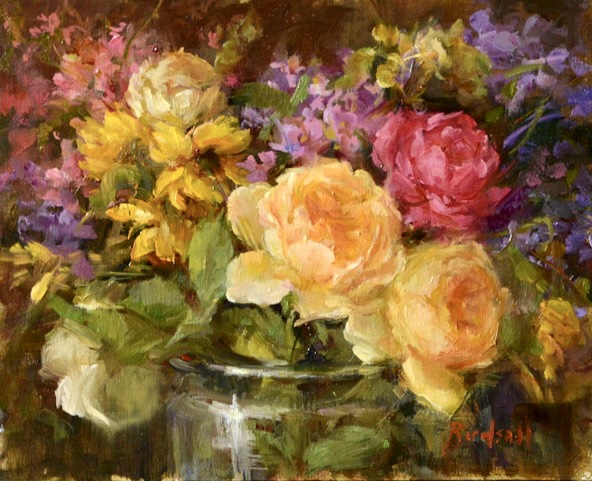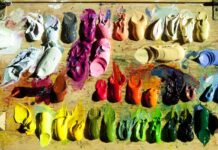Stephanie Birdsall (Lemons and Leaves: The Natural Still Life Painting) received her formal training at the City and Guilds of London Art School in England. After graduation she spent time traveling through Europe honing her skills as a plein air painter.
Upon her return to the United States, Stephanie continued her study under several top artists, including Doug Dawson, Albert Handell, and Ramon Kelly. One of her turning points was when Richard Schmid and Nancy Guzik invited her to join them as a member of their painting group, The Putney Painters. Until then, Stephanie was painting gorgeous still lifes in pastel at the time when Richard said to her, “If you’re doing this in pastel, what aren’t you painting in oil?” With his encouragement, she transitioned to include oil in her repertoire and now loves it equally.
Her work has garnered recognition and more than 60 major awards in national and international juried exhibitions. She has exhibited at the Royal Academy Summer Exhibition in London, England, Bargemon in France, and at the National Arts Club in New York.
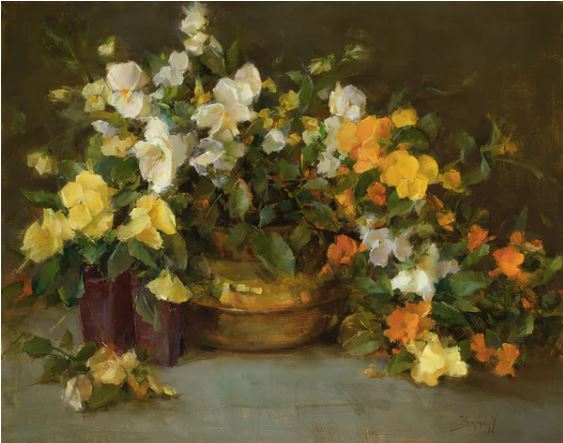
What does still life give you as a painter?
Still life gives me the opportunity to explore subject matter in a mostly controlled situation. I choose the subject and the light, and conceive the painting of my choice. It also gives me a great opportunity to learn, and time to observe, study, and explore.
When you’re setting up a still life to paint, what’s important to keep in mind?
For me, light is everything … I look for the flow of light and how it leads my viewer’s eye through the painting. I look for my hard and soft edges, my dark and light patterns, but it all comes down to the light. I also prefer my objects to be under life size, so I search for the smaller fruits and flowers. Usually something in particular will have caught my eye and I get that inner zing that tells me I want to paint it. Then it’s the question of what do I want to add to support it. And always, the harmonizing effects of the color of the light.
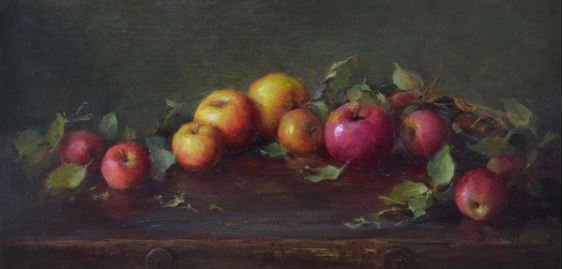
You paint from life. What does painting from life give you that working from a reference photo can’t?
To me, there is nothing better than life. I get a visceral reaction to the beauty that occurs in life. I don’t have that sort of reaction from a photograph. I’ve never seen a photo that keeps me up at night thinking about it or makes me jump out of bed in the morning. I used to take photos, thinking I’d paint from them. I take photos for reference, but I haven’t painted from one exclusively in many years. I can understand how if you really know your subject, then you could have a feeling of excitement about something. I just love life!
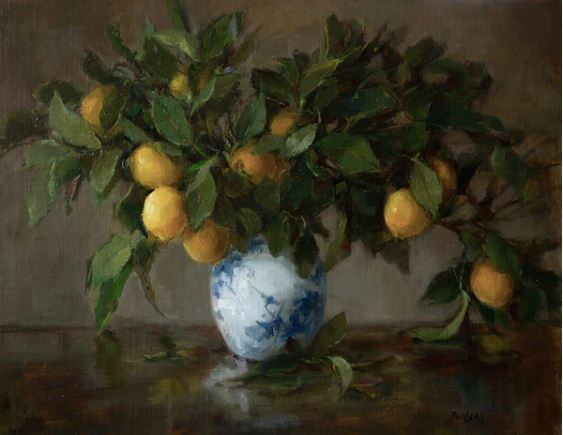
Could you give us a brief overview of your process? What do you need to have figured out at each stage?
My first thought is always the light. I have a wonderful north-light window in my studio, and I pretty much use that light source daily. Connecticut in the winter is tough. If I need to use artificial light, I have LEDs that duplicate the northern light as closely as I can get it. Once I arrange my still life objects … it could be a lemon branch, or garden peonies, or some wonderful antique pot … I then observe how the light affects them. It’s a matter of placement, and I have to think about why I want to paint it, the idea behind it. Am I painting color, edges, values? What is it that I’m trying to say?
I tell my students that it has to feel like what it is, not just look like it … atmosphere is important to me, and that’s created by the soft light that I prefer. I stand to paint, so I’m constantly moving away from the painting. I also keep a hand mirror to correct drawing issues and also to ask myself, when I compare the subject and painting in the mirror held over my shoulder, if I’m getting what I want. In other words, my idea of what is beautiful in the still life should be coming to life on my canvas.
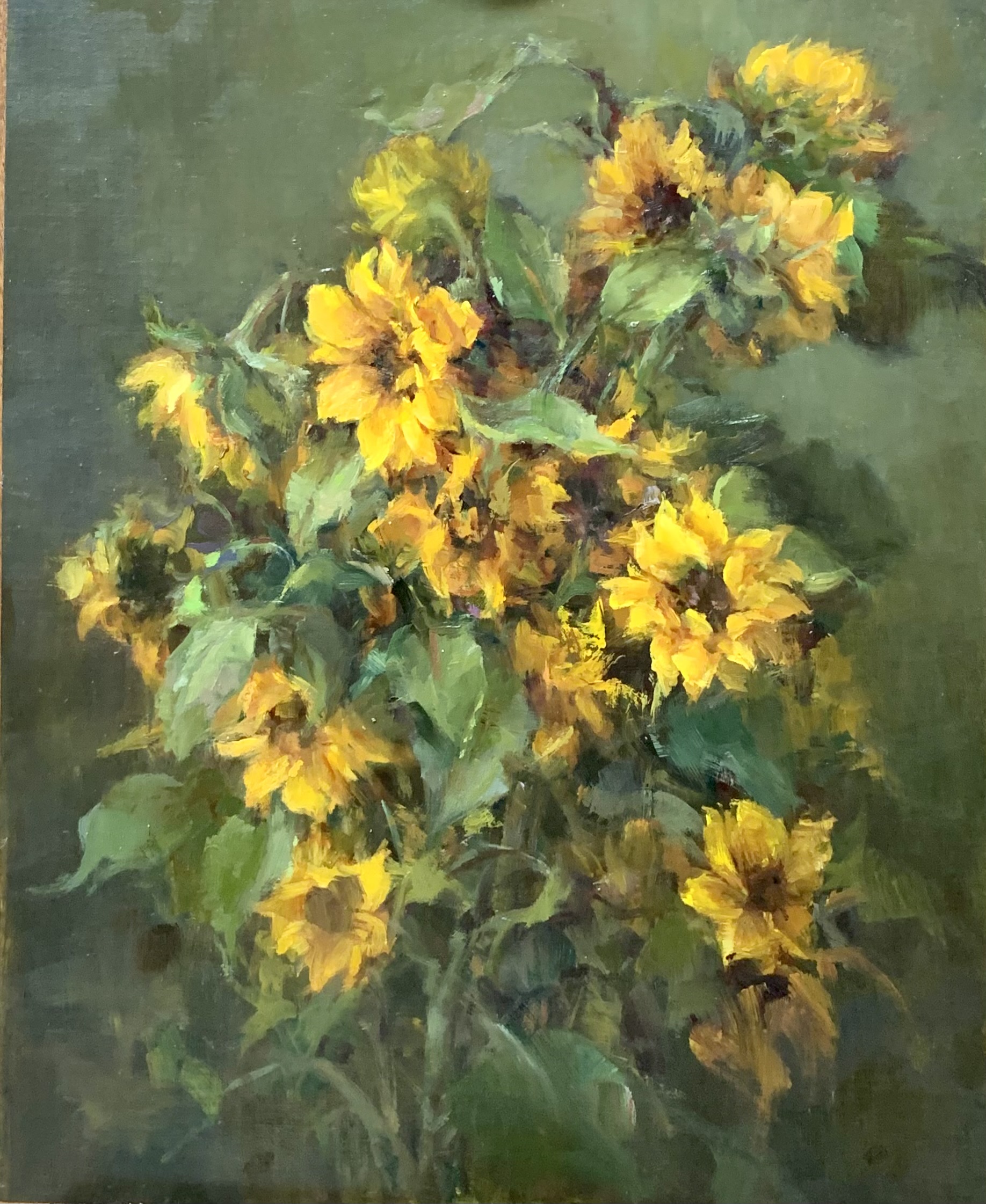
How do you place still life elements in a painting and have it be a dynamic composition?
I don’t think about dynamic composition when I set up a still life. Since almost all my objects are organic in nature, they seem to have a natural rhythm. They often dictate to me the way they are going to be placed. Again … flow of light over and through them.
In a more complex composition, how do you create energy in a painting without overwhelming the viewer?
I think you need quiet spaces and louder ones. Brushstrokes that lead your eye … edges that stop your eye.
Again, the light is the driver … How do I get from here to there in my painting? I’ve painted paintings with many flower blossoms in them … For me, it’s the light on the flowers that moves the eye through the painting.
Connect with the Artist: stephaniebirdsall.com
Preview “Lemons and Leaves: The Natural Still Life” painting workshop here >
.
Learn more about how to paint a still life in oil: “Lemons and Leaves: The Natural Still Life”
Visit EricRhoads.com (Publisher of Realism Today) to learn about opportunities for artists and art collectors, including: Art Retreats – International Art Trips – Art Conventions – Art Workshops (in person and online, including Realism Live) – And More!


